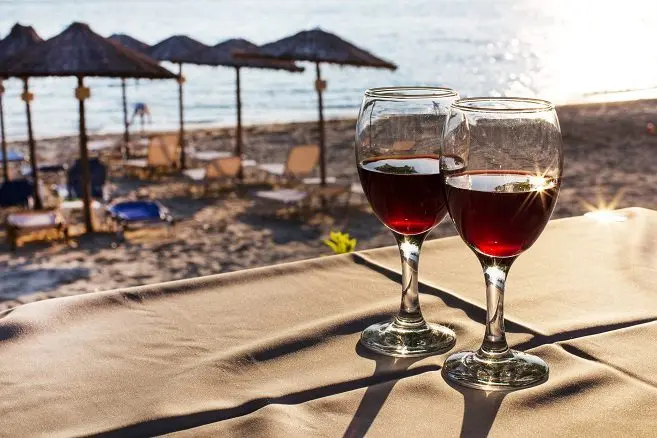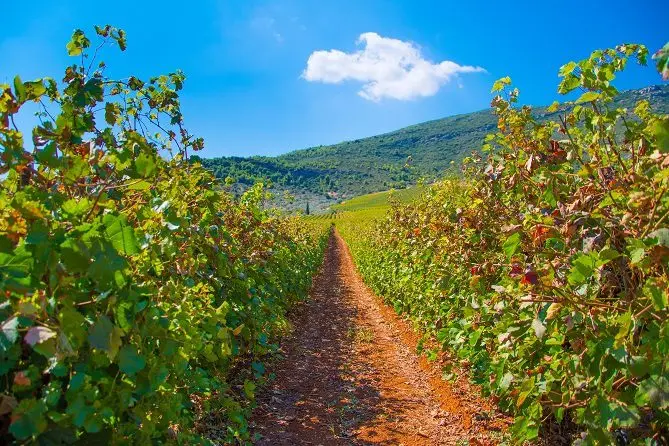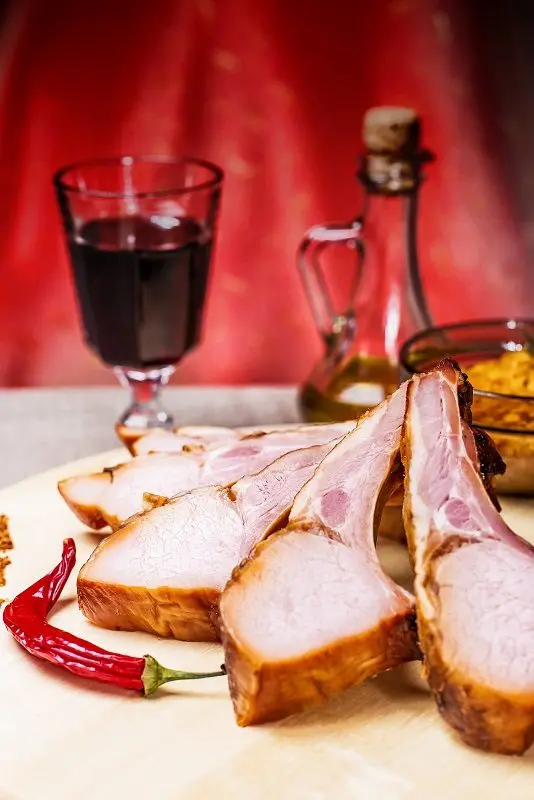Mavrodafni (Μαυροδάφνη, translated from Greek as “black laurel”) is both an autochthonous Greek grape variety from the Achaia region and a sweet fortified wine produced from it.
Features
Mavrodafni is a name protected by origin. Grapes are distinguished by dark skin color, strong aroma. The wine has a dark red, almost purple-brown color, the bouquet contains notes of caramel, chocolate, coffee, raisins, prunes, marzipan, spices. “Black Laurel” is a very sweet medium-bodied drink of the middle price category, it can be found literally in any shop in the Peloponnese. The strength of the wine is 15%.

History
Mavrodafni wine in its modern form was first made by Gustav Clauss. In 1859, a Bavarian bought land in the Achaia region near the city of Patras. Initially, he was going to grow blackcurrants, but took 60 acres for vineyards. In 1861, Clauss founded his own production Achaia Clauss and began to produce wine from autochthonous varieties. The winery works to this day, and Mavrodafni has become a real hallmark of Greece, its pride and glory.
There is a legend that Gustav named wine in honor of a deceased lover named Daphne, but most likely this is just a beautiful fairy tale. Archaeological and historical sources prove that the Mavrodafni variety was common in the Peloponnese even before the XNUMXth century.
Before Mr. Clauss, black laurel berries were mixed with indigenous grapes of lesser quality (for example, Black Corinthiaki) to get a semi-sweet table wine.

Production technology
Ripe Mavrodafne berries are crushed and left to ferment in large vats under the sun. When the liquid reaches the required degree of fermentation, it is filtered, then fortified with alcohol or grape distillate, stopping fermentation and at the same time increasing the strength of the drink. At the same time, part of the natural sugar content is retained, which forms the sweetness. Then the wine is bottled and aged for about 8 years. The best samples are aged in wine cellars according to the “solera and criadera” system.
Solera and criadera is a method in which young wine is constantly blended with older samples. Traditionally, barrels of wine are stacked in a pyramid (the higher the tier, the younger the drink in it). For sale and tasting is alcohol from the lowest barrel. As soon as a little space is freed up in it, it is immediately filled with wine from the next tier, there, in turn, the resulting shortage is topped up with wine from the tier above, and so on until the end. Thus, the bottom barrel always contains a blend of all vintages over the past few decades.
However, ordinary dry wine is also made from Mavrodafni grapes – the sugar is completely fermented, and the fermented juice is not fortified with alcohol. This wine is rarely sold in its pure form, often blended with other varieties.
The inventor of the dessert Mavrodafni, Gustav Klauss, first used a blend of “black laurel” and Cabernet Sauvignon.
Grape Features
Do not confuse Mavrodafni with other grape varieties with similar names:
- Mavro – Mavro, a medium quality Cypriot variety.
- Mavrotragano – Mavrotragano, a grape from the island of Santorini.
- Mavrud – Mavrud, a Balkan variety, especially common in Bulgaria.

The Mavrodafni variety is quite capricious, susceptible to disease and does not tolerate drought well. These grapes give a bountiful harvest, but then the wine is less aromatic. To maintain the same quality of the product, the black laurel vines need to be artificially thinned out.
Two clones of the variety are known:
- Regnio – also grows in the Achaia region, has a denser cluster and a slightly modified leaf shape.
- Tsigelo – the clusters of this variety are smaller than those of the “original”, the wines are of better quality.
Production region
The famous dessert wine is produced only on the Greek Peloponnese near the city of Patras and in small quantities on the island of Kefalonia.
There are two official types of Mavrodafni, differing on a territorial basis:
- Mavrodaphne of Patras
- Mavrodaphne of Cephalonia
How to drink Mavrodafni
Along with Cahors, Mavrodafni is one of the official wines used by the Orthodox Church in the sacrament of communion.
In secular life, “black laurel” is served with meat dishes, desserts, baked figs, semi-soft Greek cheese, fruit pie, chocolate. Serving temperature – + 16-18 ° C.










